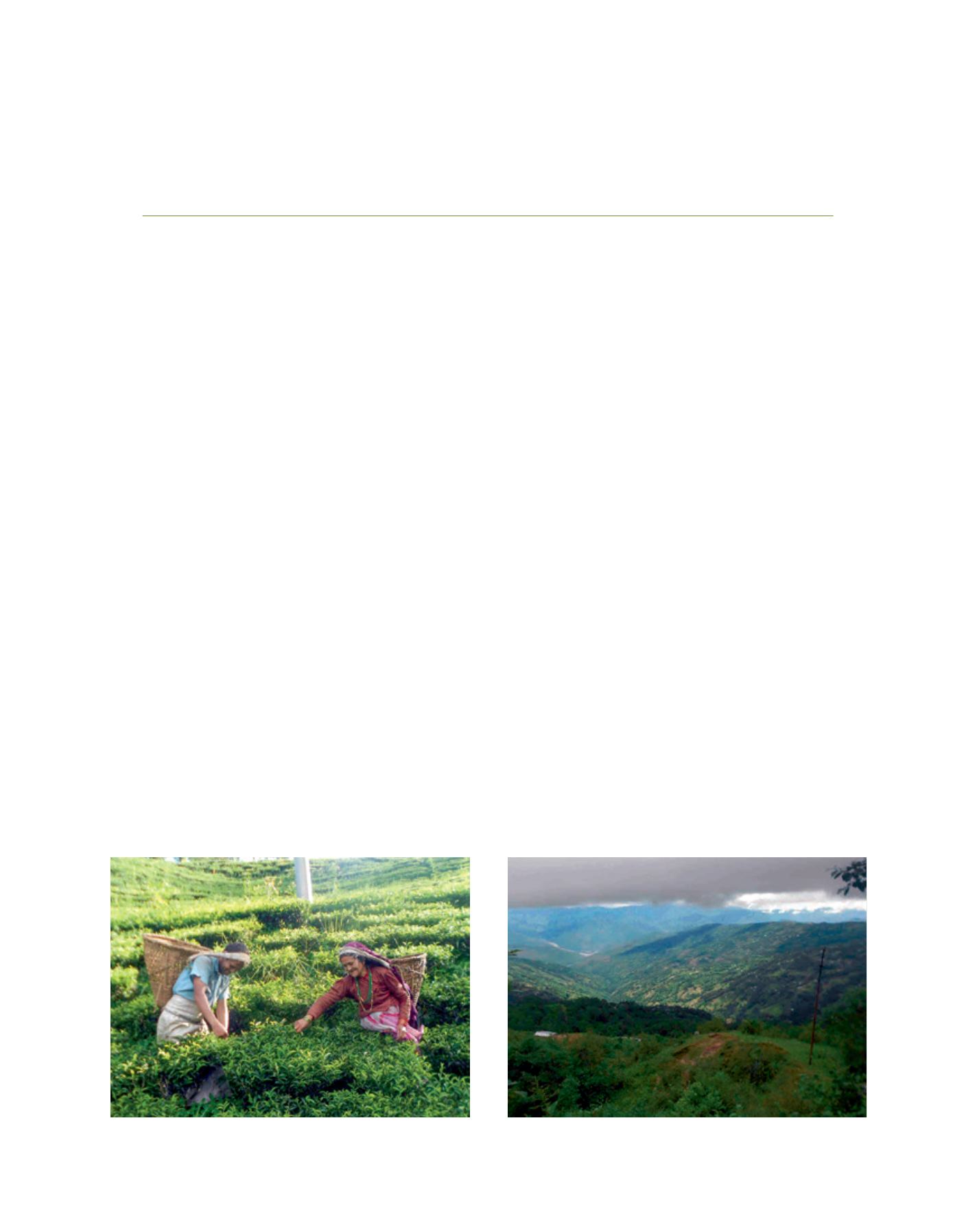

[
] 157
Engaging and promoting family
tea farmers through cooperatives in Nepal
Rabin Rai, General Secretary, Central Tea Cooperative Federation, Nepal
N
epal is primarily an agricultural country. It has
a population of 30 million, 66 per cent of whom
are farmers, and more than 85 per cent of those
farmers live in rural areas with marginal land holdings.
The farmers usually engage members of their families as
inputs in cultivation.
Unfortunately, at present the young population is attracted
to work in foreign countries for more lucrative jobs and easy
income. Each day, more than 1,500 young people are going
to work abroad and finding less interest in agricultural activ-
ity in Nepal.
The Central Tea Cooperative Federation of Nepal (CTCF)
was established in 2010 and registered with the Ministry of
Agriculture and Cooperative Department to address farmers’
needs through tea cooperatives. CTCF is a member-based
national apex body of tea farmers’ cooperatives and their
district federations. Currently, 85 tea cooperatives and five
district tea cooperatives are members of CTCF. Some 18,000
small family farmers are involved in the tea sector in Nepal.
CTCF’s vision is focused on economic development
through tea cooperative promotion. It works on a central level
to improve the situation of the small tea farmers through the
cooperative movement. CTCF’s goal is to assist the develop-
ment of socioeconomic conditions for tea farmers through
cooperation. It operates in the districts of Ilam, Panchthar,
Dhankut, Therathum, Jhapa, Lalitpur, Udayapur, Taplejung,
Sankuwasava, Taplejung, Ramechap and Bhojpur with more
than 5,500 family tea farmers. The family members engage
in all the activities of tea farming and culture. Along with
tea, these families also engage in raising livestock, subsistence
farming and cultivating cereals.
The proclamation by the United Nations of 2014 as the
International Year of Family Farming creates a unique oppor-
tunity to develop the means to assure, in the medium and
long term, prosperous and sustainable family agriculture
development in rural areas on all continents, and especially
in developing countries.
Nepali agriculture is based on small family farms that are
mainly subsistence oriented and yet are not capable of feeding
the people and facilitating the economic development of the
country. But tea is a cash crop which ensures foreign exchange
for Nepal. More than 20,000 hectares of land are cultivated with
tea, out of which 85 per cent belongs to small family farmers.
Lack of infrastructure in rural Nepal is the most impor-
tant hindrance for development, and the most affected people
are the farmers. In addition to this, lack of access to finance
creates more difficulties. Farmers are facing different prob-
lems such as a lack of the technical knowledge needed to
increase productivity or improve processing and marketing.
Overall, they also don’t have the capacity to negotiate.
The Government’s tea policy of 2000 was inadequate to
address all the issues faced by tea farmers. In this scenario
CTCF was formed to address these issues and lobby with the
Government to solve the problems faced by the smallholder
tea family farmers of Nepal.
A mother and son plucking tea in the family tea fields
A rural village in Nepal: agriculture here is based on small family farms
Image: CTCF
Image: CTCF
D
eep
R
oots
















